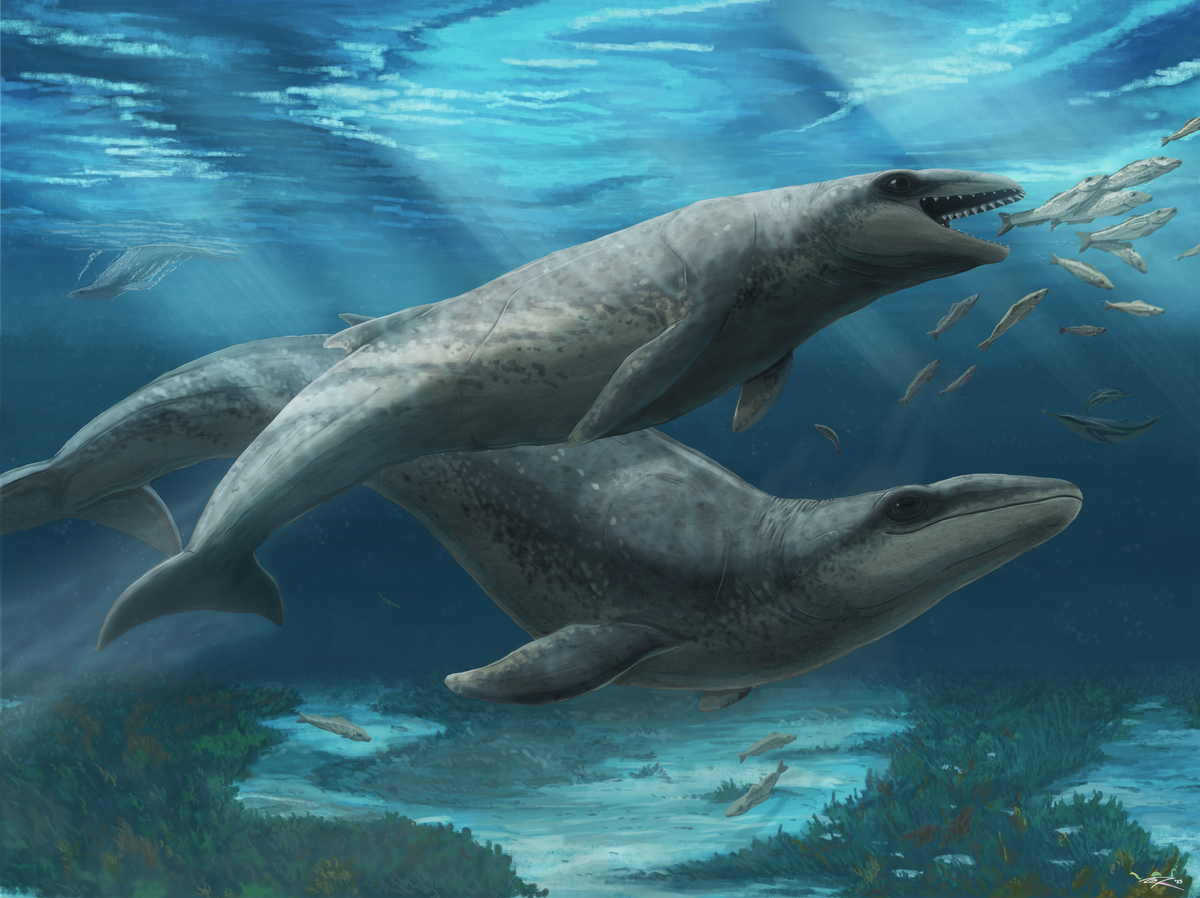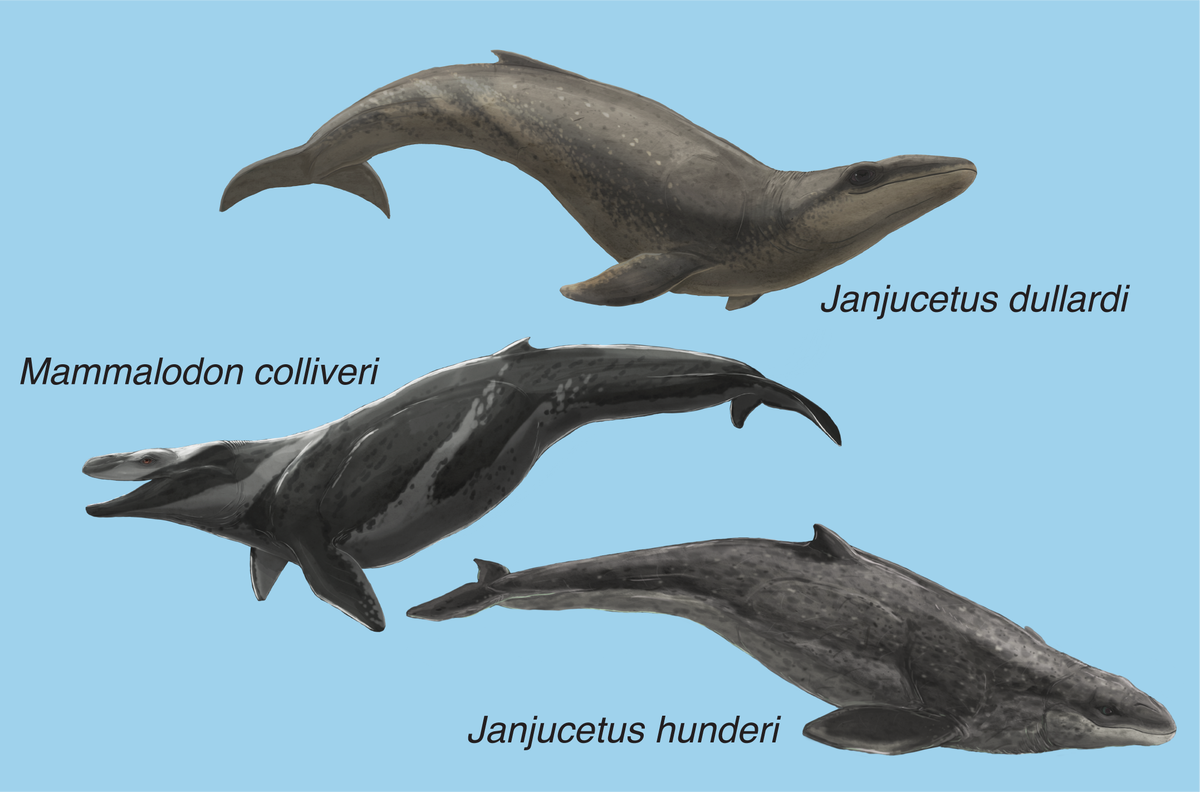🐋 A walker discovers an adorable but fearsome prehistoric whale with razor-sharp teeth
Published by Adrien,
Source: Zoological Journal of the Linnean Society
Other Languages: FR, DE, ES, PT
Source: Zoological Journal of the Linnean Society
Other Languages: FR, DE, ES, PT
Follow us on Google News (click on ☆)
This whale, named Janjucetus dullardi, is a distant cousin of modern baleen whales, like the gigantic blue whale. Unlike them, it was much smaller and had a stocky body adapted for speed. Its remains, discovered on Australia's southeastern coast, belonged to a young individual about 2.1 meters long (6.9 feet).

The newly described Janjucetus dullardi is known from juvenile remains. This illustration depicts a small J. dullardi with its mother.
Credit: Artwork by Ruairidh Duncan. Source: Museums Victoria
The fossils of J. dullardi were discovered by Ross Dullard, a school principal, while walking along Half Moon Bay beach. These fossils, exposed at the base of an eroded cliff, were dated between 24 and 28 million years old. This discovery has allowed scientists to learn more about whale evolution.
Analyses, including photographs and microCT scans, revealed that J. dullardi was a previously unknown species of mammalodontid. These small whales lived in warm, shallow waters off Australia and New Zealand during the Oligocene epoch. The region has become a key site for discovering ancient whale fossils.
Researchers continue to explore the area, hoping to uncover other species that could shed light on whales' evolutionary history. These discoveries highlight the importance of public contributions to science, like that of Ross Dullard, which has helped write a new chapter in whale evolution.

Scientists have named three mammalodontid species from fossils discovered in Victoria, southeastern Australia.
Credit: Artwork by Ruairidh Duncan. Source: Museums Victoria
How did whales evolve into the giants of the sea?
Modern whales, like the blue whale, are the largest animals ever to live on Earth. Their evolution from small land mammals is a remarkable example of adaptation to aquatic life. Around 50 million years ago, their ancestors began returning to the ocean, developing distinct features from fish in their fins and tails, among other traits.
Over time, some species developed baleen to filter plankton, while others, like Janjucetus dullardi, retained teeth for hunting. This diversity shows how whales explored different ecological niches before baleen species came to dominate.
Fossil discoveries like J. dullardi help scientists understand this transition. They reveal how anatomical changes, such as the reduction of hind limbs and the development of tails, allowed whales to become efficient swimmers.
This evolutionary story is still being rewritten, with each new discovery adding missing pieces to the puzzle.
Why is Australia a hotspot for ancient whale fossils?
Australia, particularly the Victoria region, has become a prime location for discovering ancient whale fossils. This abundance is due to the area's unique geological conditions, which favored fossil preservation in ancient marine sediments.
Coastal cliffs, like those of Jan Juc Marl, are constantly eroded by waves, exposing fossil-rich geological layers. These conditions make fossils accessible to researchers and even lucky walkers like Ross Dullard.
The warm, shallow waters covering the region during the Oligocene provided an ideal habitat for ancient whales. These environments were rich in prey, supporting a diversity of species that left behind abundant fossil traces.